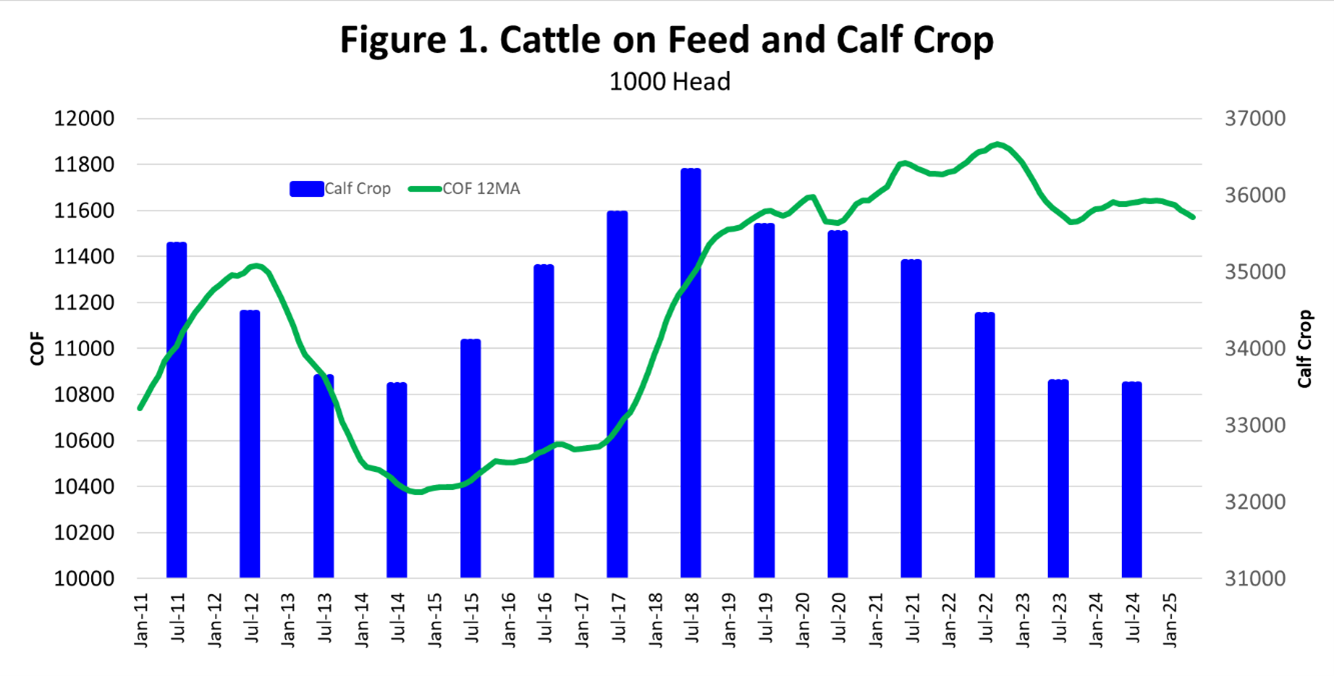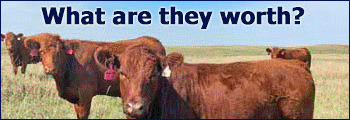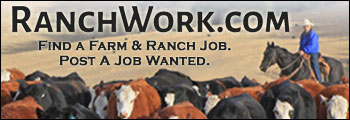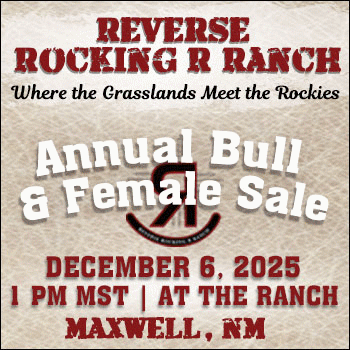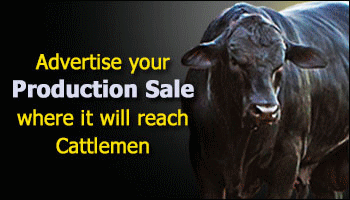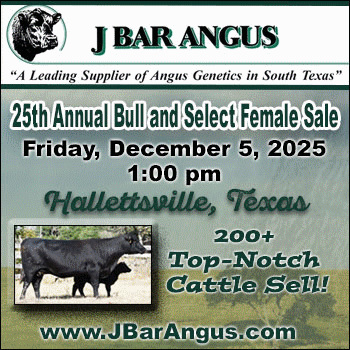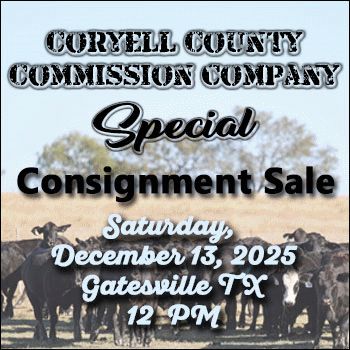Derrell S. Peel, Oklahoma State University
The latest USDA Cattle on Feed report pegs feedlot inventories on May 1 at 11.376 million head, down 1.5 percent year over year. This is the sixth consecutive monthly decrease year over year in feedlot numbers though the decrease has been minimal thus far. Figure 1 shows that annual average feedlot totals are slightly lower recently (far right side) but have decreased little in the past 18 months or so.
April feedlot placements were down 2.6 percent year over year, about as expected. Feedlot placements have been variable, down four of the last six months and down a total of 3.6 percent compared to the same period one year ago. April feedlot marketings were down 2.5 percent year over year, also close to expectations. Feedlot marketings were down three of the previous six months, compared to last year, and decreased just 1.6 percent in total during the same six-month period. The result is a slower turnover rate that allows feedlots to maintain higher inventory levels despite decreased placements.
Feedlots have maintained inventories primarily because of two factors: continued heifer feeding and increased days on feed. The April quarterly breakdown showed that the heifer percentage of feedlot inventories dropped to the lowest level in five years but remains above the average of the past 30 years. Data from Kansas feedlots shows that days on feed (DOF) increased in mid-2023 with average DOF increasing by about ten days since. Heifer feeding and increased days on feed have masked declining feeder cattle numbers since mid-2023.
Figure 1 above shows that the total calf crop has declined for the past six years, peaking cyclically in 2018. Feedlot inventories have remained relatively steady while the total calf crop declined. The current relationship between cattle on-feed and calf crop is a sharp contrast to a decade ago when feedlot inventories dropped as the calf crop decreased to cyclical lows. From 2012-2014, average feedlot inventories decreased by 984,000 head. Since the peak in 2022, average feedlot inventories have fallen by just 315,000 head and have varied by a scant 94,000 head in the past 24 months.
There are indications that heifer feeding will decline in the coming months as heifer retention increases. Additionally, days on feed have likely reached a maximum, meaning that no additional gains are likely from slowing the feedlot turnover rate. In other words, the gains from slowing the turnover rate do not continue once the slowing is complete. Both of these factors mean that it is likely that feedlots will see more rapid decreases in average inventories in the coming months.
Articles on The Cattle Range are published because of interesting content but don't necessarily reflect the views of The Cattle Range.
